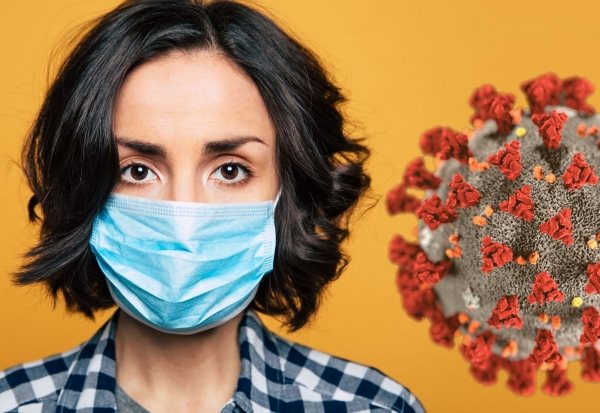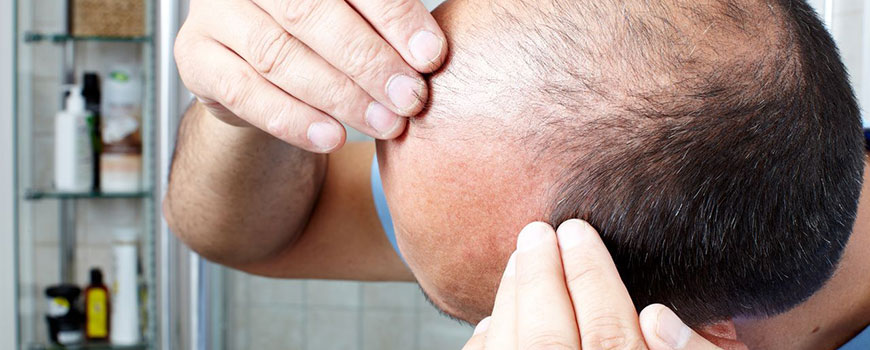Table Of Content

Thus, we hope that this report will help physicians in encouraging their patients with hair loss after COVID-19. In the August 2021 study “COVID-19 infection is a major cause of acute telogen effluvium,” 39 patients between the ages of 22 and 67 diagnosed with the condition were given a hair pull test to confirm the telogen effluvium diagnosis and severity. All participants had a laboratory-confirmed diagnosis of SARS-CoV-2 infection with 15 who reported mild symptoms and 24 who experienced moderate disease. Despite these limitations, our results show detailed clinical presentations of COVID‐19 patients suffering from hair loss. While it may be reassuring for patients and clinicians that hair loss in COVID‐19 could potentially be reversible without specific treatment, a small number of patients experienced irreversible hair loss, without clear pathophysiology to date.
Dr. Liji Thomas
COVID-19 Could Increase the Risk of Autoimmune Disorders - Everyday Health
COVID-19 Could Increase the Risk of Autoimmune Disorders.
Posted: Mon, 09 Oct 2023 07:00:00 GMT [source]
If you have a rash, itchy scalp, or burning, something other than telogen effluvium is likely causing your hair loss, and it’s time to see a dermatologist. There are many different types of hair loss and a multitude of factors that can contribute to the issue. The hair loss that’s seen post-COVID-19 is usually telogen effluvium, a condition in which hair sheds in response to a stressor. Telogen effluvium—the most common type of generalized hair loss—is not only triggered by viruses, it can also be a side effect of certain medications, nutritional deficiencies, hormonal abnormalities, and stressful events (more on that soon).
What are the best treatment options for COVID-19?
Telogen effluvium, whether it’s caused by COVID-19 or another trigger, usually isn’t permanent. “Shedding can occur, however, for three to six months before it stops,” Dr. Kuhn says. With telogen effluvium the hair growth cycle eventually normalizes and, because there is no damage to the scalp or hair follicles, all of the hair should grow back. In addition, recent studies reported dermatological manifestations as extrapulmonary signs.
DATA AVAILABILITY STATEMENT

These factors could be considered precipitating factors of TE after COVID-19 infection [15, 16]. Being gentle with your hair while it’s experiencing change is important so as not to exacerbate any thinning. It goes without saying that excessive heat and chemical treatments aren’t a good idea, but try and opt for protective hairstyles too. “Opt for hairstyles that minimize tension on the hair follicles, such as loose braids, buns or ponytails,” advises Gaboardi. “Avoid tight hairstyles and hair accessories that pull on the hair and handle your hair with care to minimise breakage and damage.
A large longitudinal study on 538 COVID-19 survivors and 184 controls was conducted in Wuhan, China, to investigate the prevalence and predictors of COVID-19 clinical sequelae [4]. Alopecia was among the most prevalent complaint in convalescent COVID-19 patients, occurring after three to four months and being reported more commonly by women [4]. Multiple studies have been conducted to understand the association between COVID-19 infections and the development of TE; however, evidence concerning the prevalence of TE among recovered COVID-19 patients in Saudi Arabia is currently limited. Hence, our study aims to explore the prevalence of hair loss among recovered COVID-19 patients and measure the impact of hair loss after COVID-19 on the quality of life among residents of Saudi Arabia. Limitations of this current study include that hair loss in COVID‐19 patients were commonly made as a clinical diagnosis without the use of histopathological assay or specific biomarkers.
rs.type = 'text/javascript';
Things such as microneedling devices and laser combs or caps are available for at-home treatment of hair loss. The American Academy of Dermatology notes that trials have shown promising results, but more research is needed into their effectiveness. There are also some things you can do at home to help treat hair loss. Remember to always talk with your doctor before using any at-home treatment or supplement. As disconcerting as it can be, Dr. Khetarpal says hair loss as a result of COVID-19 infection, stress or other causes is treatable. Dr. Khetarpal also stresses that the overwhelming benefits of being vaccinated for COVID-19 strongly outweigh any potential hair loss concerns.
More in vitro studies and PCR investigations on skin biopsies would be needed along with histopathological analyses to include the status of hair follicles. Marmon said she and other dermatologists across the country have seen an overall uptick in patients with hair loss since the pandemic began, including some who were never infected by the coronavirus. When the cause of your hair shedding is due to a fever, illness, or stress, hair tends to return to normal on its own. As your hair grows back, you’ll notice short hairs that are all the same length by your hairline.
Except for a large retrospective cohort study from Korea which investigated the risk of alopecia areata (AA) among COVID‐19 patients, other studies focused on telogen effluvium (TE). In less than 10 percent of cases, patients may experience a condition called chronic telogen effluvium, where excessive hair shedding can persist beyond six months. "This can last for a couple months to a couple years, and usually no obvious cause can be found," Perng says. "In this situation, we treat the symptoms the best we can with medical therapy." However, if your shedding persists beyond six months, Dr. Kuhn suggests consulting a board-certified dermatologist if you can. If you don’t see a dermatologist regularly, see your primary care doctor, who can give you a referral for an expert in your area.

There were no clear trends between COVID‐19 severity and the extent of hair loss. Analysis of the 58 cases also found similar results with most of the cases being female (82.8%), the median onset of hair loss of 2.0 months, and the median time to recovery of hair loss of 5.0 months with a resolution rate of 95%. The good news is the majority of telogen effluvium cases are over in about three to six months, when those additional hairs that were prematurely shifted into telogen have shed. According to Perng, this characteristic recovery happens after an inciting event, such as COVID-19 infection. When that period is over, those hairs will slowly shift back to normal.
One study says up to 60% of people infected with COVID-19 experience hair shedding. "The best thing we can do as providers is provide reassurance that this is a self-limited condition and that hair will recover," Perng says. Patients are provided the tools to evaluate their condition and monitor their progress at home. For example, a patient may be asked to do a 60-second hairbrush test and collect the hairs in a pile to see how much they are losing on a routine basis.
As the duration of telogen is ∼3 to 4 months, the shedding usually starts at this time. The authors have tried to put forward potential mechanisms by which the SARS-CoV-2 virus may interact with the hair follicle directly or cause injury to it. But excessive hair loss can occur after a major physical or emotional stressor such as fever, illness, pregnancy, surgery or grief, disrupting the normal hair growth cycle and forcing more hairs into the shedding phase. “It’s not specific to COVID, but very common with COVID,” Dr. Young explains. COVID-19 pandemic has affected all aspects of medical issues due to its unpredictable characteristics.
You should also see a doctor if your hair loss is accompanied by a rash, flaking or itching, which could indicate a different problem. Dermatologists are tracking COVID-19 survivors who continue to have symptoms, called long-haulers, to find out for sure if what they are experiencing is telogen effluvium or something related to ongoing illness or inflammation. MEDLINE and EMBASE searches were conducted for all peer‐reviewed articles from inception to November 20, 2021. Additional relevant articles were screened with the reference lists of all articles that satisfied the eligibility criteria. The search strategy harbored relevant keywords, including “Hair Loss,” “Alopecia,” “Telogen Effluvium,” and “COVID‐19.” Two authors (TC and YN) conducted the search independently. “Every infectious disease has common and uncommon manifestations,” said Dr. Mark Mulligan, an infectious disease specialist at NYU Langone Health.
It can also be suggested that the stress caused by COVID-19 disease could be a cause of hair loss. On the whole, it’s important that you speak with your doctor about any symptoms you’re experiencing. A dermatologist can provide a proper diagnosis, and select a personalized treatment that will help restore health to you hair and scalp.
Additionally, articles published within Cureus should not be deemed a suitable substitute for the advice of a qualified health care professional. Do not disregard or avoid professional medical advice due to content published within Cureus. The authors of this study believe that this is the first study to report on the prevalence and impact of hair loss on the quality of life among COVID-19 survivors from different regions of Saudi Arabia. First, it is a cross-sectional study and thus it is not possible to infer causality between the study’s variables.

No comments:
Post a Comment